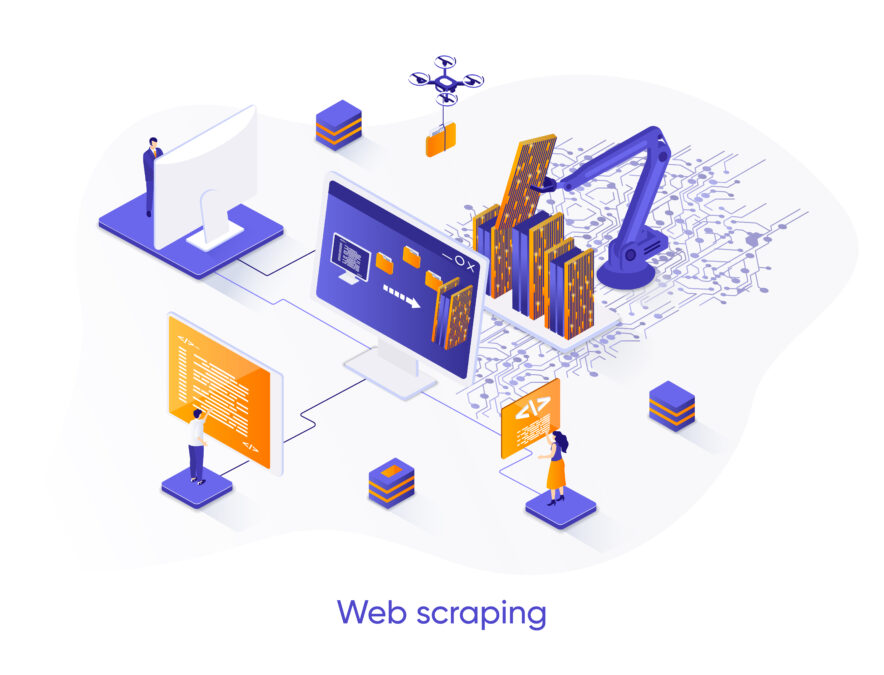Since its inception in the early 1990s, customer relationship management (CRM) has quickly evolved from being a 'must-have' application that would solve every company's customer service headaches, to being a byword for over-hyped, difficult to implement, technology bluster. As word spread of the 80% failure rate for CRM projects and the amount of software gathering dust on the shelf, the once optimistic market took a nosedive.
But during 2004, CRM has staged something of a recovery. Sales are picking up as businesses have become more aware of the issues surrounding CRM, going to vendors with operational problems to be fixed rather than naïve hopes of a sales process panacea. And users are becoming increasingly confident of demanding only the CRM modules they need – many see the more limited functionality of hosted applications as sufficient.
Enterprise CRM
The contrast between the two leaders battling it out at the high-end of the CRM market illustrates one of the key, undecided questions over the best way to design a CRM system : Should the shape of your front-facing software reflect the way you interact with your customer, or should it be optimised for complete integration with your back end?
CRM heavyweight Siebel built its business on the strength of the functionality of its application. "The nature of a back-office product is to simplify and streamline business processes," argues Neil Morgan, Siebel's Vice President of marketing for Europe, Middle East and Africa. "A front office product should be dynamic, not standardised. You wouldn't build your whole business to fit with your sales ledger."
|
||
But Siebel has seen its dominance of CRM gradually eroded. Its fierce rival SAP now outsells it in terms of licenses. This is, of course, not the only measurement of market share. Siebel can take comfort in analyst group Gartner's findings that as few as 19% of SAP's CRM license holders have systems in production.
For its part, SAP argues that the end-to-end view of a sale that CRM customers are looking for can only be afforded by a system that is integrated with the back end. It also claims that an isolated CRM application restricts growth and flexibility, and so will have a limited life span. "A lot of our enterprise customers are coming from either in-house developed or 'best of breed' applications, which are starting to creak," explains head of CRM at SAP UK, Rachel Cortes. "They come to us looking for scalability."
Oracle – another suite vendor – is confident the market is swinging in the integrated system's direction. "[Analysts] predict a shift in market share to 45% for application suite providers, compared to 35% for 'best of breed' vendors," says Steve Elsham, head of CRM applications at Oracle UK. "Oracle is going to benefit from that shift." Elsham believes this follows recognition that a disjointed CRM system can create a gap in the sales process, causing more problems than it solves. "A best of breed solution often just shifts the problem to another department. There can be an awful lot of complicated knitting together involved in connecting those systems to the back end."
While the likes of SAP and Oracle stress the importance of a CRM application that knows its place in a company's software ecosystem, Siebel are pushing their products beyond the pre-conceived function of CRM. "Our products are beginning to overlap with the business intelligence space, for instance. Siebel Analytics is our fastest growing product," says Morgan.
Ed Thompson, of analysts Gartner, observes that in the wake of a period of economic downturn, companies' priorities are split between business development and cost reduction. "This doesn't affect the software that the providers sell, so much as the pitch they use to sell them," explains Thompson. Optimising customer service has been a key selling point in recent times, as business confidence rises, the emphasis will move towards stressing a system's ability to forecast and to simplify the process of developing sales leads, he adds.
The mid-market
While competition remains fierce at the high-end, it is even more intense in the mid-market. Siebel, SAP, Oracle and PeopleSoft have all developed products with simpler interfaces for use by the mid-sized business market. But according to Gartner's Thompson, their biggest challenge can be summarised in just one word: "Microsoft".
A latecomer to CRM, Microsoft nevertheless has two major advantages when courting mid-size customers. Firstly, while enterprise employees may well be used to using custom developed software, the vast majority of mid-size business workers will use out of box Microsoft products. A lack of user acceptance is widely recognised as the principle reason for the failure of so many of the first wave of CRM projects. Microsoft offers the reassurance and comfort of a familiar package.
Microsoft has a second advantage with its reseller channel. Microsoft has thousands of partners across Europe capable of tailoring its CRM software to individual businesses. Even after barely two years in the CRM market, Microsoft has products customised to more industries than both Siebel and SAP, who have between 20 and 25 vertically specified versions. "Increasingly, customers want a construction CRM product, or a pharmaceuticals CRM product – something tailored to whatever industry they may be i,." says Gartner's Ed Thompson. "Microsoft will build their global application partner network to cover a thousand industries or more. Siebel and SAP just can't afford the research and development for that."
But Microsoft may not just be a threat in the lower end of market. It has a history of establishing market share at the low end while gradually looking to move into the enterprise market. For its part, Microsoft has long denied that it was following this strategy. But in early December 2004 it moved the head of its UK Microsoft Business Solutions (the unit that ships its CRM software), Simon Edwards, to a role as European director for enterprise partners. "Microsoft Business Solutions products are relevant to certain departmental and subsidiary configurations within the enterprise market," says Edwards. While Edwards denies Microsoft is pitching itself as an enterprise vendor, this looks like a clear move upstream.
Hosted CRM
The most intriguing conflict to grip the CRM market is not defined by the number of end users, but the software delivery method. While hosted CRM may have started off in small companies – the market pioneer Salesforce.com still has an average of just 12 seats per customer – it is being used by all manner of businesses. Indeed office supply chain Staples has 1,500 users on its Salesforce.com system.
For many companies the subscription-based payment model offers a hosted application that helps them to escape the risk involved in a full-blown CRM implementation. According to Gartner, Salesforce.com is on track to overtake Oracle and Peoplesoft in terms of market share within the next few years.
For pharmaceutical services company Quintiles, the payment method was only one of many reasons why they chose Salesforce.com.
|
||
"We'd had our own CRM system for six years, so we knew what functionality we were looking for," explains Quintiles' head of business development information systems, Georgina Morris. "We had forty users test various products, and they rated Salesforce.com as the most intuitive to use."
Siebel was caught out by the success of hosted CRM; it had already shelved its first attempt by the time Salesforce.com was hitting its stride. Subsequently Siebel responded with a new version – Siebel OnDemand. Siebel's Morgan maintains that no company should chose a CRM system on the basis of a payment model, instead they should concentrate on functionality. Hosted systems make a good introduction to CRM, he adds: "Developing a tailor-made CRM system can take six months. In those six months we can get them using OnDemand so they get used to the whole idea and the interface."
No future?
CRM investment may be on the rise again, but looking beyond the immediate future, it may need a complete reinvention to prevent a repeat of the post-hype slump of recent years. The 'single view of the customer' that vendors promised, has yet to materialise and some doubt whether 'CRM' as we know it will ever provide this.
Ian Davis, product marketing director at Boston based e-commerce solutions provider ATG, thinks the phrase 'customer relationship management' is outdated. "CRM really means a customer centric view of data as used by employees, and is based on a finite number of users." This narrow view is, in Davis' opinion, of limited use. "Such systems are useful to some companies, but they will already have them, so in that sense the market is already saturated. Other companies will find they need an architecture that enables a very large number of users, including customers themselves, and can operate across many more channels."
Gartner's Thompson predicts that the increasing power customers have will put strain on current CRM systems. "If you look at Tivo boxes and digital radio, customers are getting used to the idea of blocking out advertising. Mass blasting irritates people, so marketing campaigns will have to be less frequent but far more accurately targeted."
And increased demand for customer data, as well as the greater involvement of customers in sales processes through the Internet, may stretch current architectures beyond their capabilities.
This may explain why Siebel's closely guarded next generation of products, codenamed Nexus, is built on a service-oriented architecture.
CRM components are the future, says Neil Weston, Siebel's president of European sales. "It allows us to deliver specific parts of the application capability we have today, in saleable bits that the user wants." The advantage of this for Siebel is that it also allows them to target businesses that have bespoke CRM systems.
So while the immediate future of the CRM industry looks healthy, as customer interest returns and the breadth of choice enlivens competition, in the longer term, the onus is on vendors to ensure their technology keeps pace with the changing nature of business and customer-company interaction.
Should they fail to do so, and another generation of CRM customers find themselves dissatisfied with their software, some vendors in the market might not survive another slump.
|
|||||
|
|||||
|
|||||






